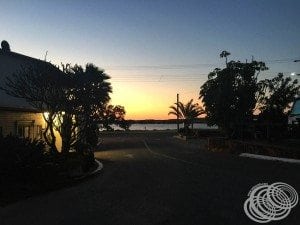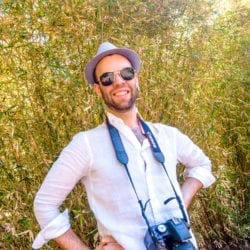The further south we travel the more touristy it becomes, but that certainly doesn’t detract from it. Monkey Mia is known for its wild dolphins, and within Monkey Mia itself, there is just one place to stay, the RAC Monkey Mia Dolphin Resort.
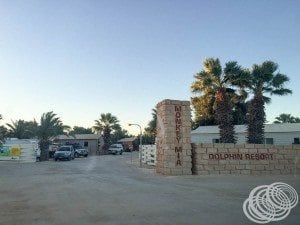
After spending the night here though, it’s quite a treat to have breakfast in the morning and be able to go see the dolphins right near the restaurant.
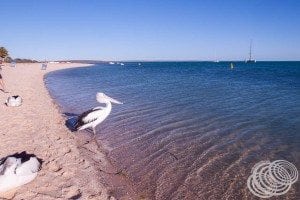
Fortunately, the dolphins are kept wild, and tourists are not permitted to feed them or interact with them beyond a short, supervised period in the mornings when the dolphins are in the bay.
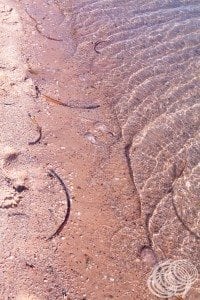
Unfortunately, that means the dolphins come and go as they please, so don’t plan on seeing them and leaving early!
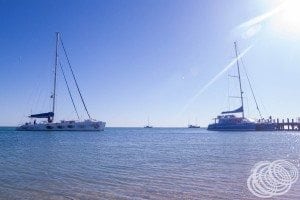
Make sure to block out a decent chunk of time and have a backup in case they do come thick. In other words, have two plans. If they arrive early, we’ll do this, and if they arrive late, we’ll do this.
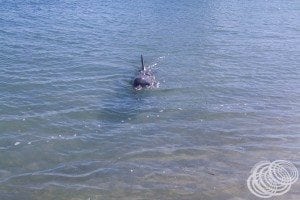
For example, our experience was that we went down to the beach at 7:30 am, but the dolphins didn’t arrive until 8:43 am.
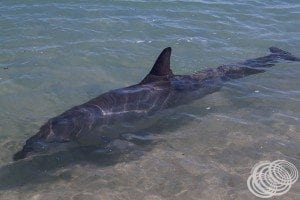
We had decided at 8:30 am that if they didn’t arrive by 9:00 am we would have to just get going. The dolphins did visit us though, coming just in time and staying until 9:10 am, so we got to see them for almost half an hour before they left and we had to go too.
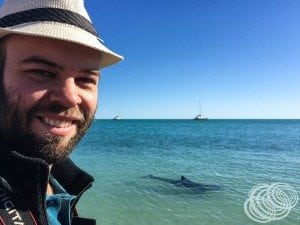
The number of dolphins that come in each morning varies, as does the duration of their visit. While we were there, we had two dolphins most of the time and two others that came and left and at different times.
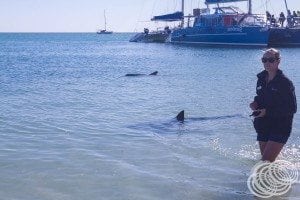
If you are lucky, you also could be one of just a few people who is picked to hand feed them a small amount of fish. By limited, I mean one person per dolphin and only a couple of pieces of fish each. It’s small enough that the dolphins still have to find food and don’t become dependent on tourists. It also means that they don’t hang around begging for food and neglecting their young, forcing them to grow up without learning how to find food.
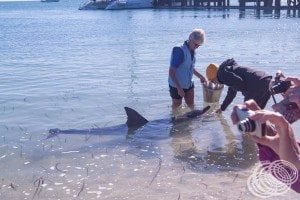
Little Lagoon
On the way back towards Denham, we stopped in at Little Lagoon.

It wasn’t on our itinerary, but I saw something jump out of it as we were driving past, so we checked it out. It turns out that schools of mullet come into the lagoon and can be seen jumping from the water. There’s also a possibility of seeing shovel-nosed rays. We went for a walk in the shallow water to see if we could spot any, but unfortunately no luck.
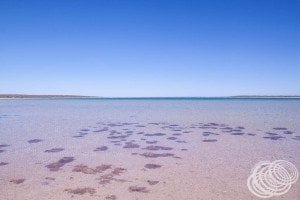
We walked out about 30 metres into the lagoon, and it barely got above knee height for me, the water is so shallow. There are lots of plants in the water though, some of which look a little unusual, so you do need to watch your step.
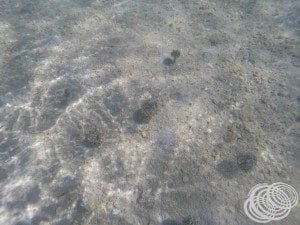
Denham
Back in Denham, we stopped in at the Shark Bay Discovery Centre, aka the visitor information centre.
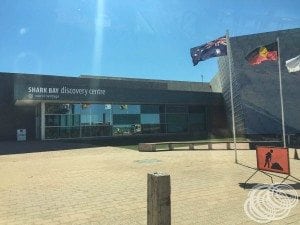
It’s a modern, information centre with a mural outside that points towards the wreck of the HMAS Sydney.
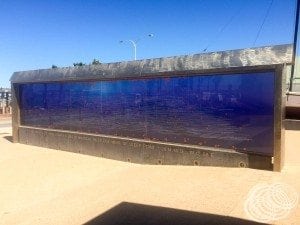
Inside, there is a decent amount of freely accessible information on the ship wrecks in the area including the Batavia, Trial, Zuytdorp, Zeewijk and Vergulde Draeck.
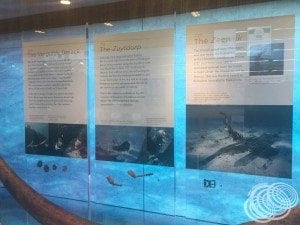
There’s even a 3D underwater film of the Batavia wreckage which is cool.
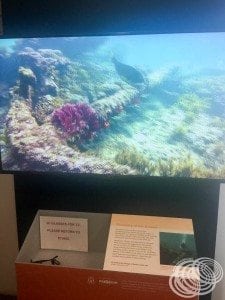
There is also a paid museum with a cost of $11 for adults. Unfortunately, we didn’t have time to check it out, so we kept going.
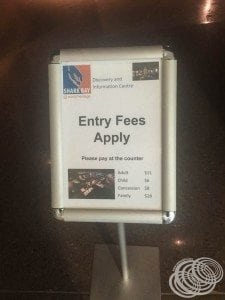
Denham itself is a quaint place with a beautiful beach.
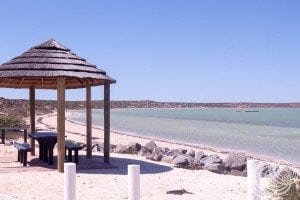
It would be quite a nice spot for a beach holiday in my opinion.
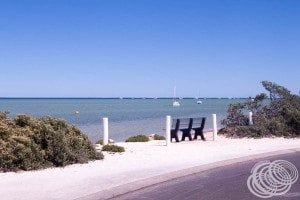
Eagle Bluff
Heading out of Denham back towards the North West Coastal Highway there are a surprising number of things to see. The first is Eagle Bluff, located about 24km’s or 25 minutes from Denham. Coming the other way, it’s about 113km’s from the Highway. The last 4km’s on Eagle Bluff road though are dirt, and it’s in desperate need of grading, so depending on what you are driving it can be slow going.
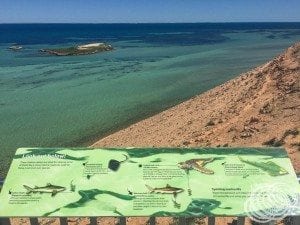
Once you reach the Eagle Bluff car park, there is a raised board walk you can follow for about 50 metres for the best view.
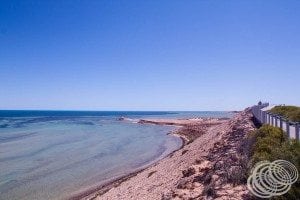
There is also a shortcut in the form of a dirt path from the car park out to the viewing platform.
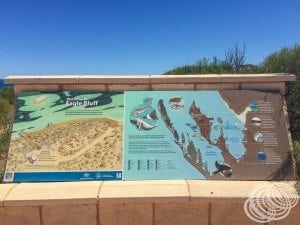
It’s still about 35 metres though, so I’d take the board walk if I was you and enjoy the view the whole way.
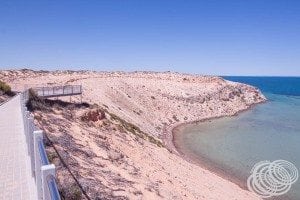
If you are short on time though, the view from the car park is pretty fantastic anyway, looking out towards Eagle Island and the nearby cliffs!
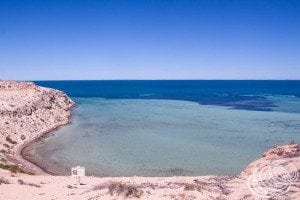
So if you are there at the right times of year and you are lucky, it’s possible to see all sorts of sea creatures in the ocean below including lemon sharks, cow tailed stingrays, nervous sharks, loggerhead turtles and giant shovel-nosed rays. I’m pretty sure we saw one of the giant shovel-nosed rays! It’s remarkable how visible they are from so high above.
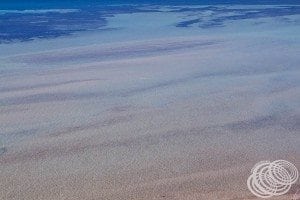
Shell Beach
Next stop on the way back to the highway is Shell Beach.
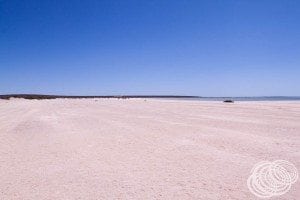
It’s about 30km’s from Eagle Bluff, 45km’s from Denham or 85km’s from the highway and is just off Shark Bay Road. On the way, we were kind of excited to hit 333,333 km’s on the camper van odometer!
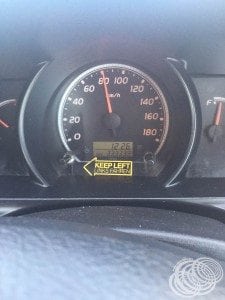
It is a short, unpaved 40-metre walk from the carpark to the start of the shell dunes and another 60 metre (approximately) walk across the dunes to the water’s edge.
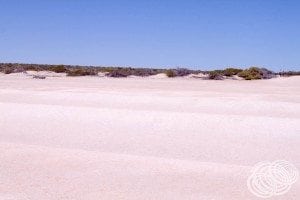
The walk out to the dunes is easy, the walk across them is a bit harder. While the dunes are firm to walk on, they roll up and down a lot with a reasonably steep bank so they may be a challenge for some.
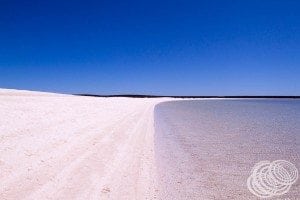
From the edge of the dunes though, you can immediately see what makes this beach so unique. It is brilliantly white and made up of millions and millions of Fragum Cockle shells.

There are over 4000 of these cockles living in one square metre of the hyper saline water found here in the L’haridon Bight.

Considering in places on the beach that the shells are up to 9 metres deep, one can only imagine how many are actually making up this 70 km long beach. Remarkably, it turns out that below the surface layers these shells actually turn into a form of limestone called coquina. This process occurs as rain containing carbon dioxide dissolves the shells, glueing them together. There actually used to be a “shell block” quarry nearby for mining this limestone.
Hamelin Pool
Continuing back along Shark Bay Road, the next place we stopped was Hamelin Pool to see the Stromatolites and microbial mats.

It is about 62km’s from Shell Beach, and you can drive it in about 45 minutes.
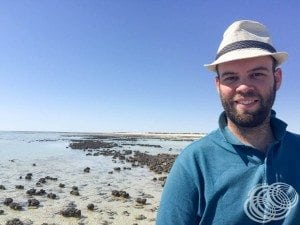
It’s also about 107km’s from Denham and 35km’s from the North West Coastal Highway turn off. The car park can be accessed via the Hamelin Pool Caravan Park and Telegraph Station, but it’s a bit of a rough, dirt track out. At least it’s short though. Once you get there, it’s only a 200 metre walk out to the stromatolites (400 metres return). The walk is in two parts, a relatively smooth dirt track followed by a board walk over Hamelin Pool.
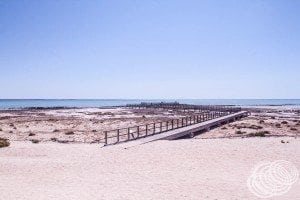
It’s an easy walk out there, and what you will see varies depending on the tide.
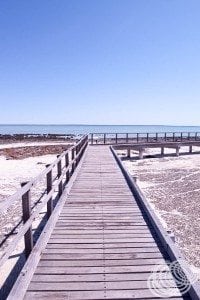
For us, the tide was out, so many of the microbial mats and stromatolites were exposed, with some partially submerged.
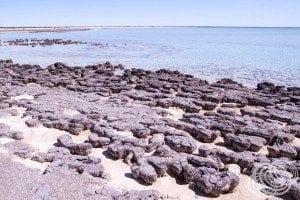
If the tide is in though, then you will see a lot more submerged. The surrounding area is pretty arid and doesn’t look like much of anything at all.
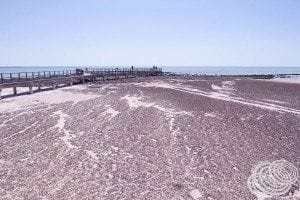
Once you get down to the water though, you get to see something pretty unique. If you’ve never seen these quirky life forms before, they are pretty odd looking. Some look like rocks that are cracking up. Some look more like mould, particularly when they are above the water line.
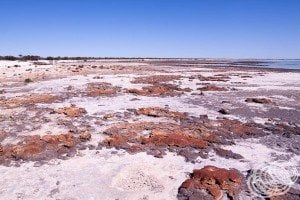
Unlike rocks though, the stromatolites generally appear smaller at their bases and get larger towards the top. They also seem to all be separate, where big rocks at the beach often seem to be part of a larger rock.
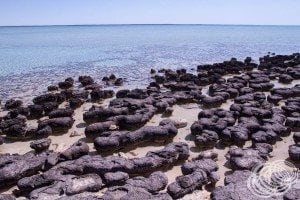
Make sure to have a close look at what’s going on in the water. We actually spotted some little schools of fish swimming in amongst the partially submerged stromatolites. Then, of course, there are the birds preying on the sea life.
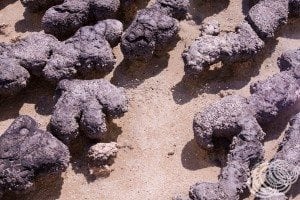
Be careful though and make sure to stick to the board walk. These formations are delicate and easily broken.
Back on the road and arriving at Kalbarri
We noticed a lot of these little melons all along the side of the road.
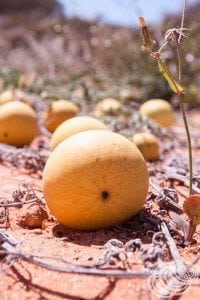
I was tempted to try one, but it turns out they are an inedible pest, so best not to chow down!
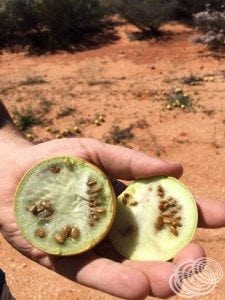
Just wait a little longer and you will find the Billabong roadhouse on the highway!
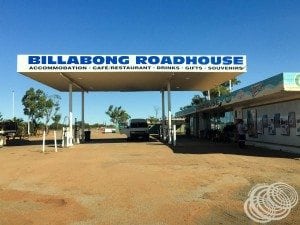
So we stopped there for a bite to eat before turning off to Northampton via Kalbarri where we spent the night at the Murchison River Caravan Park Kalbarri. It was evening by the time we arrived, so we just hit the sack and got some sleep, but the sunset was pretty spectacular.
